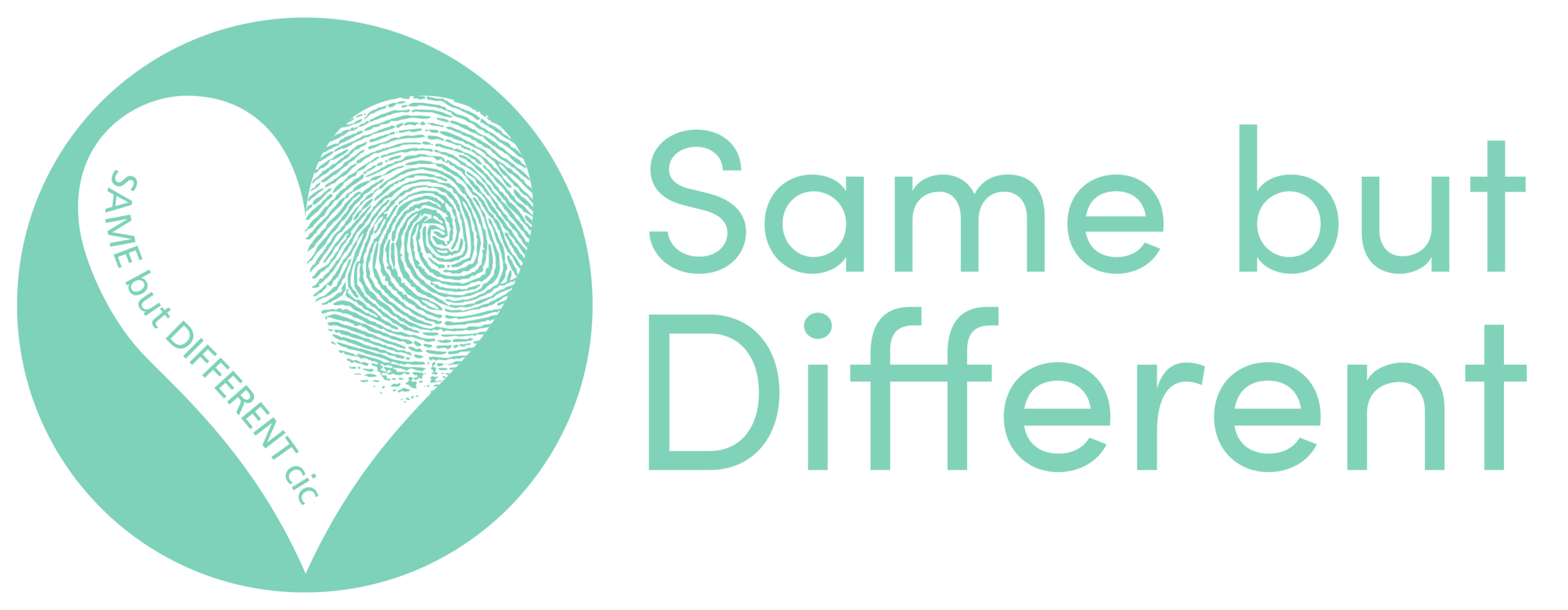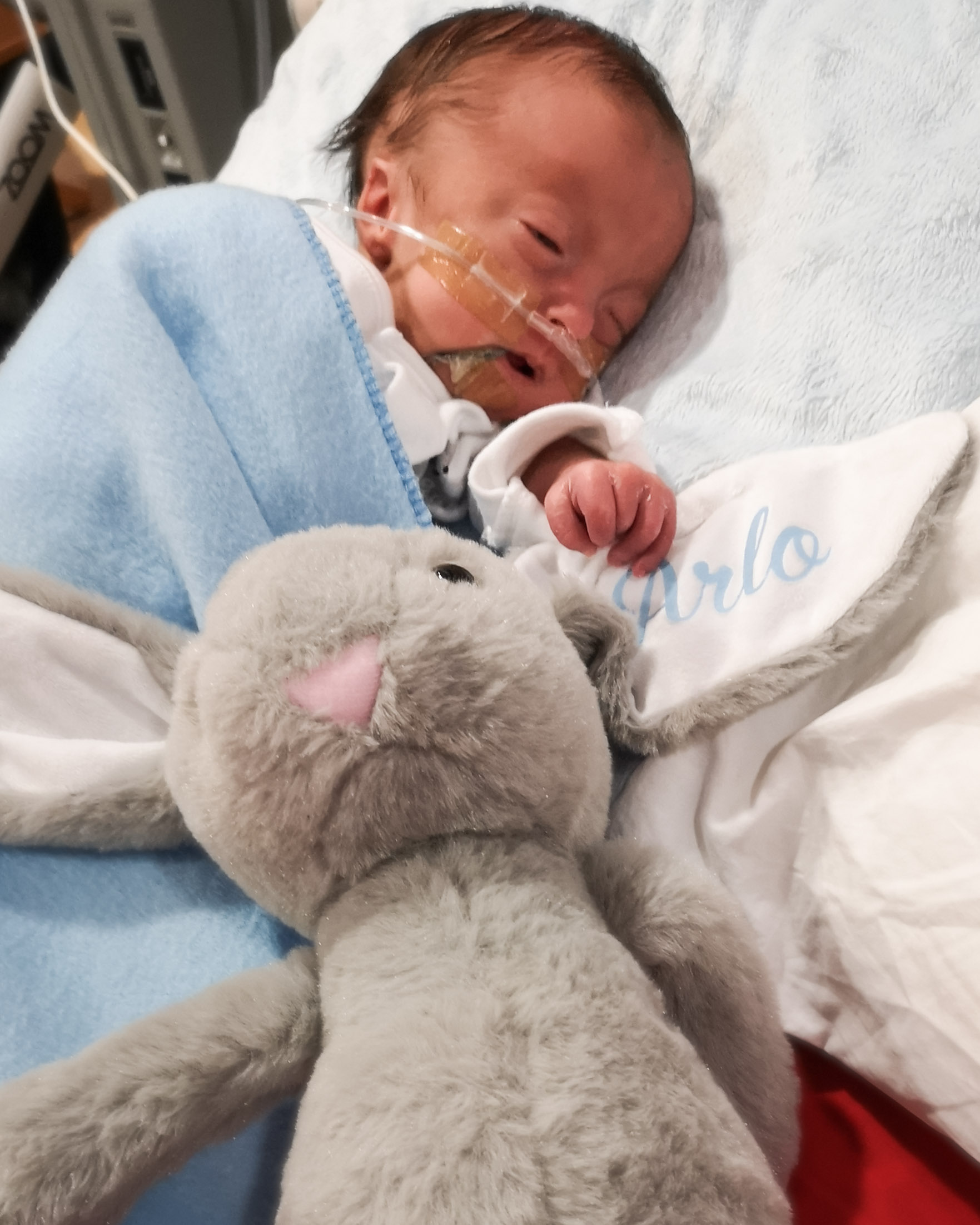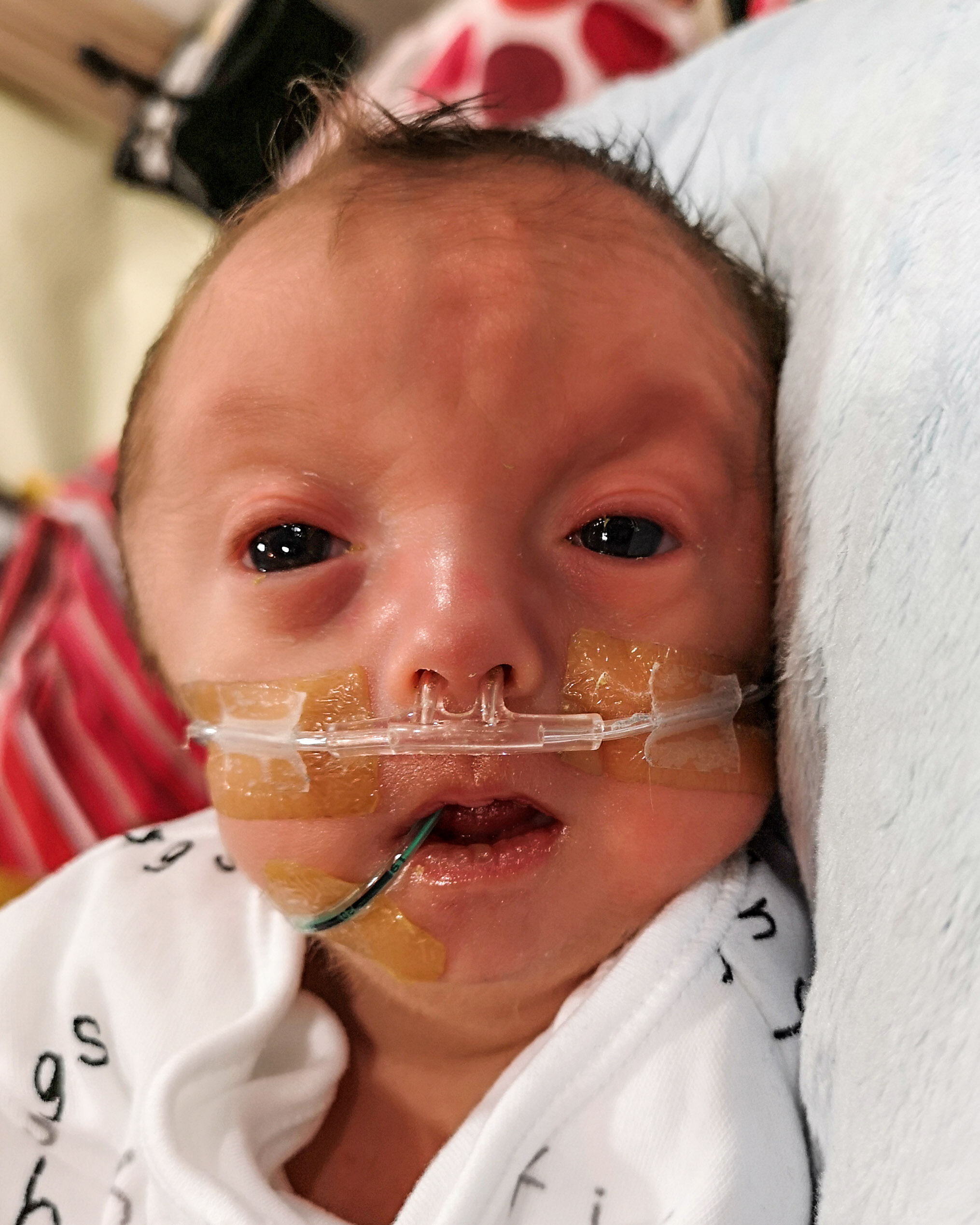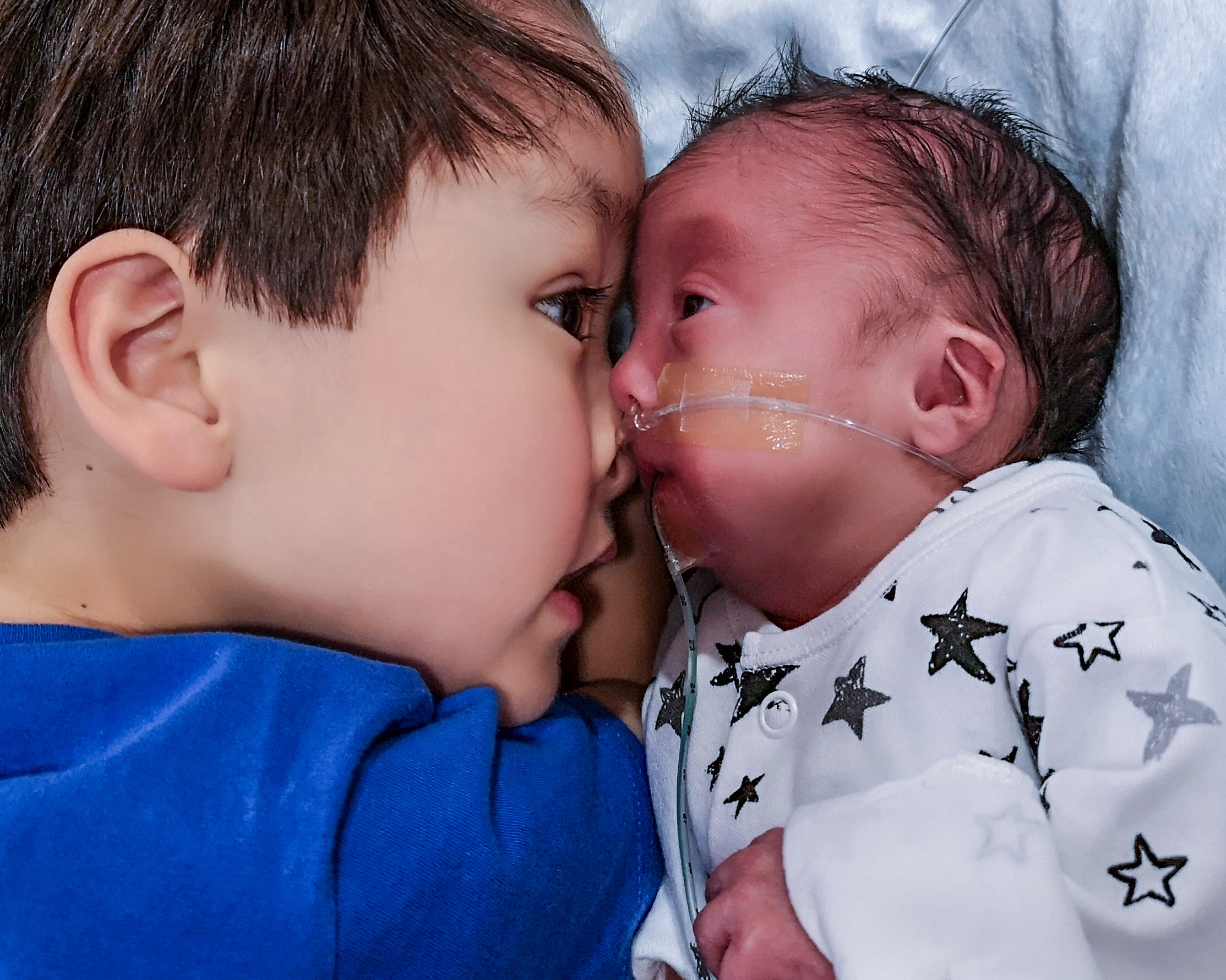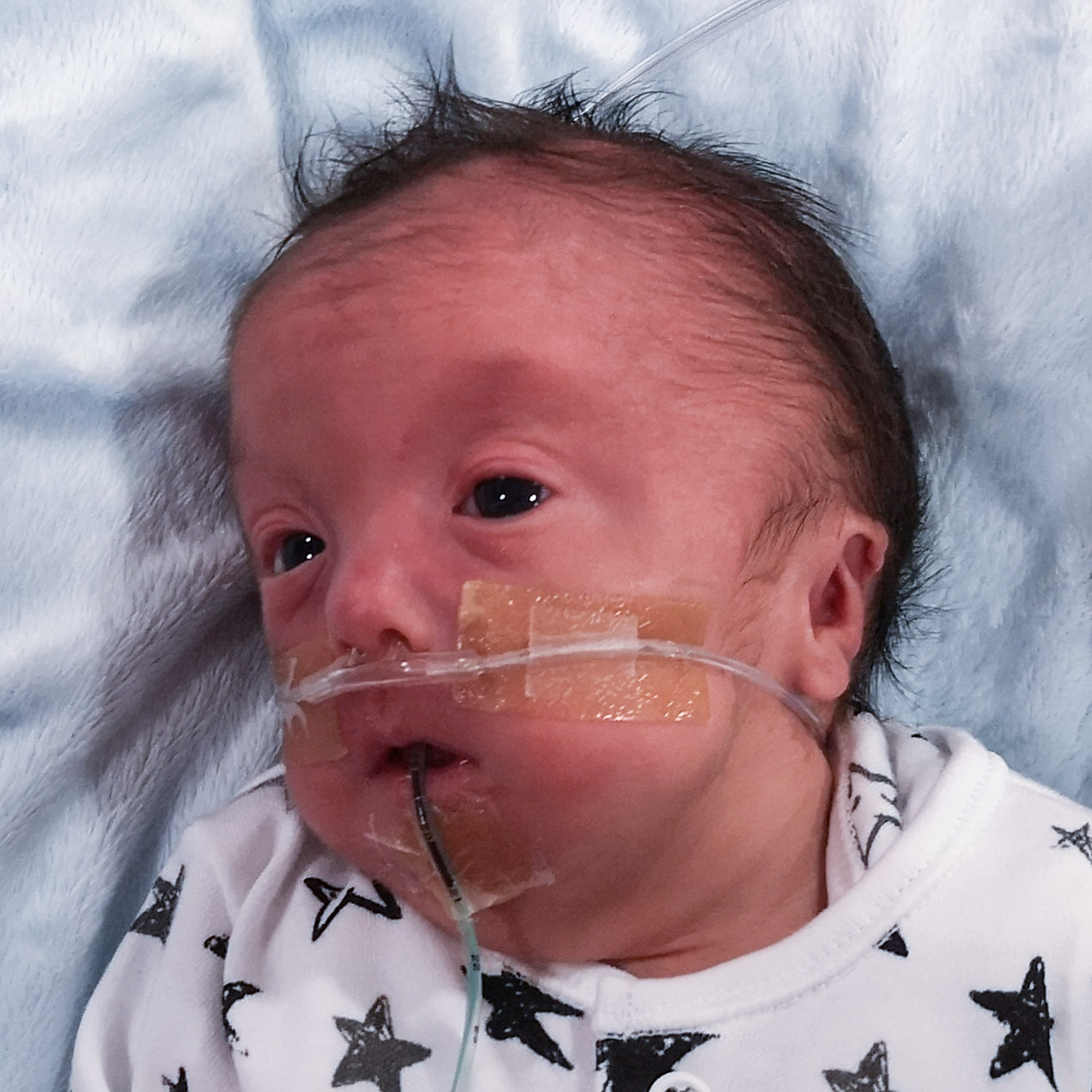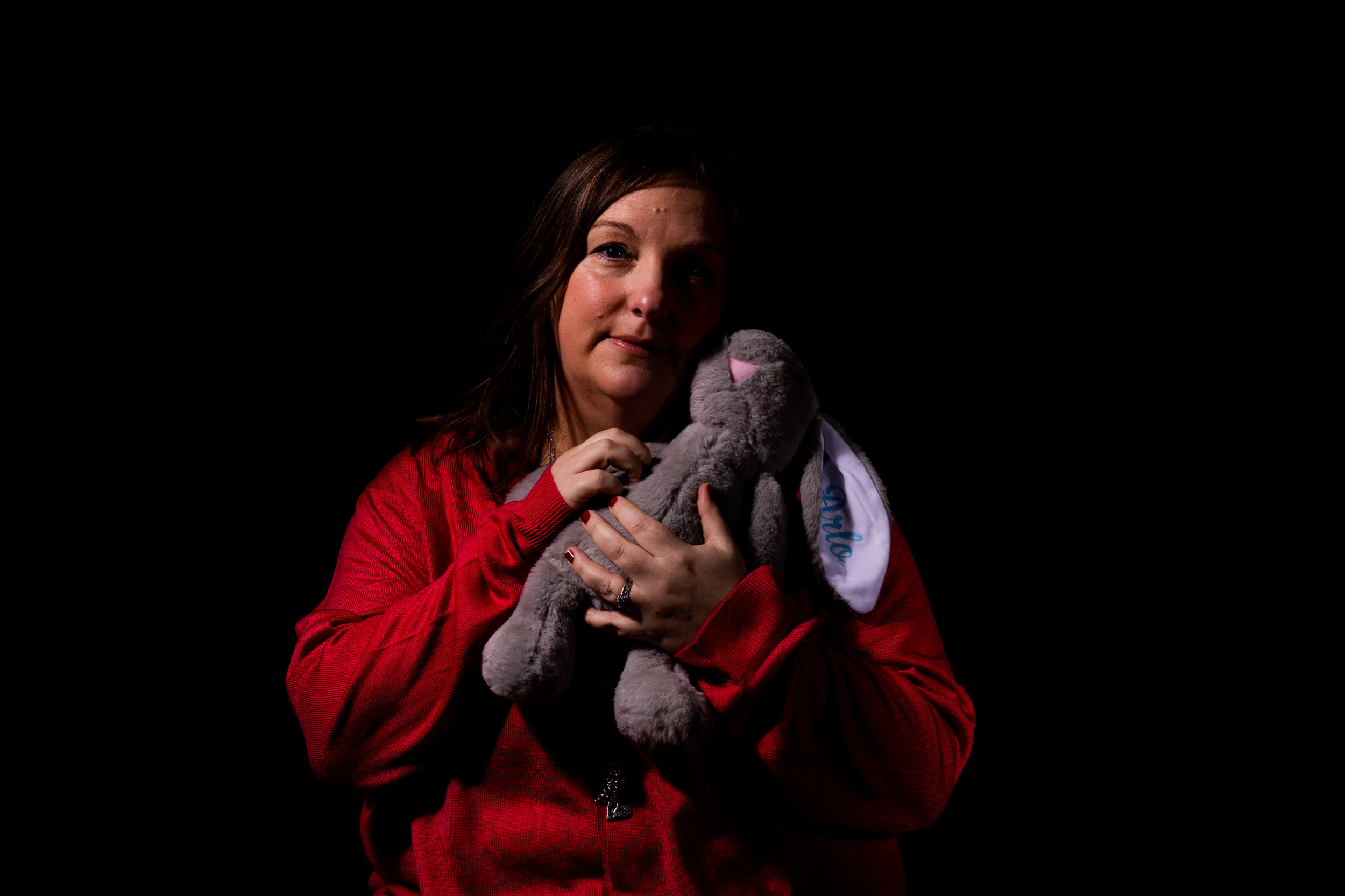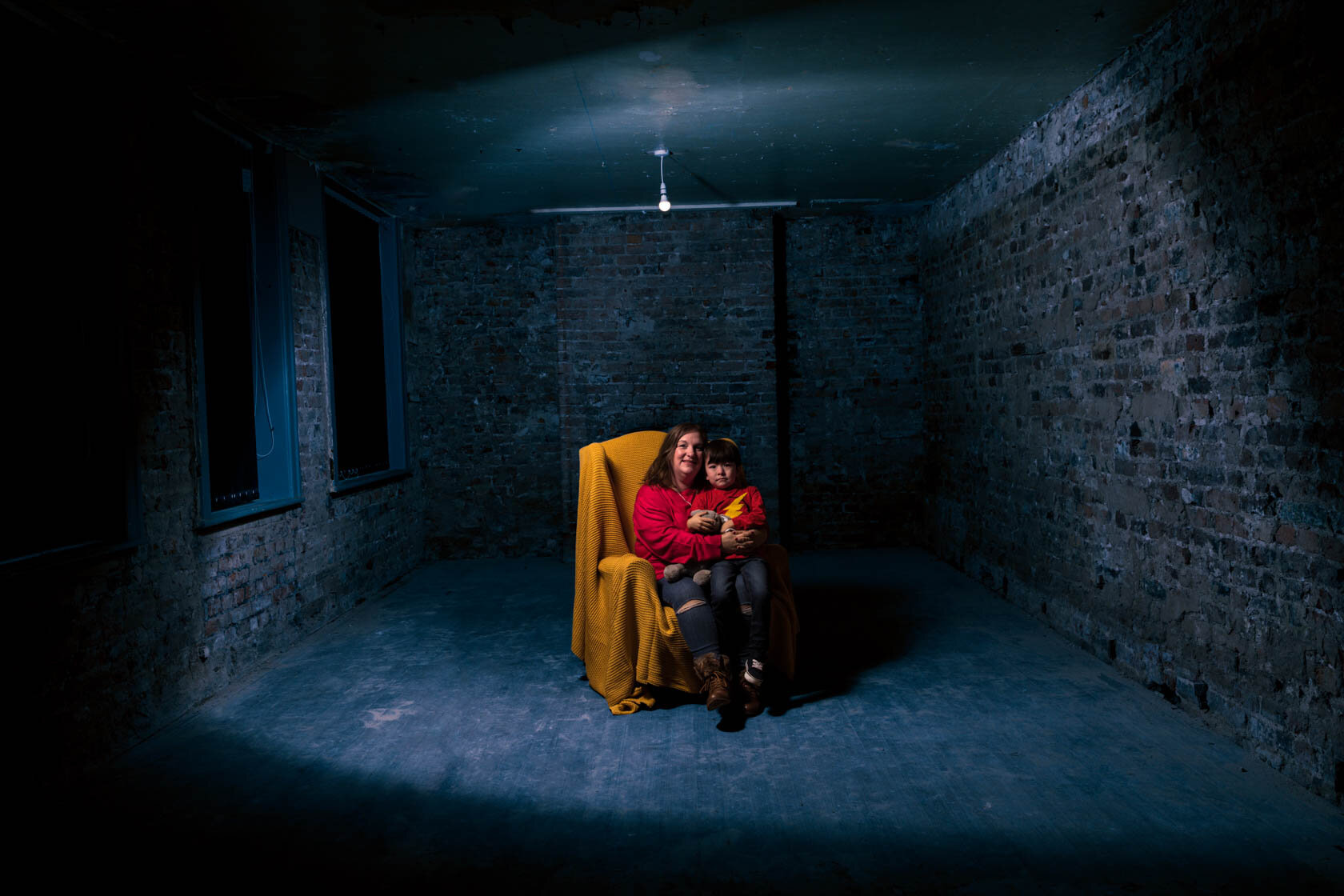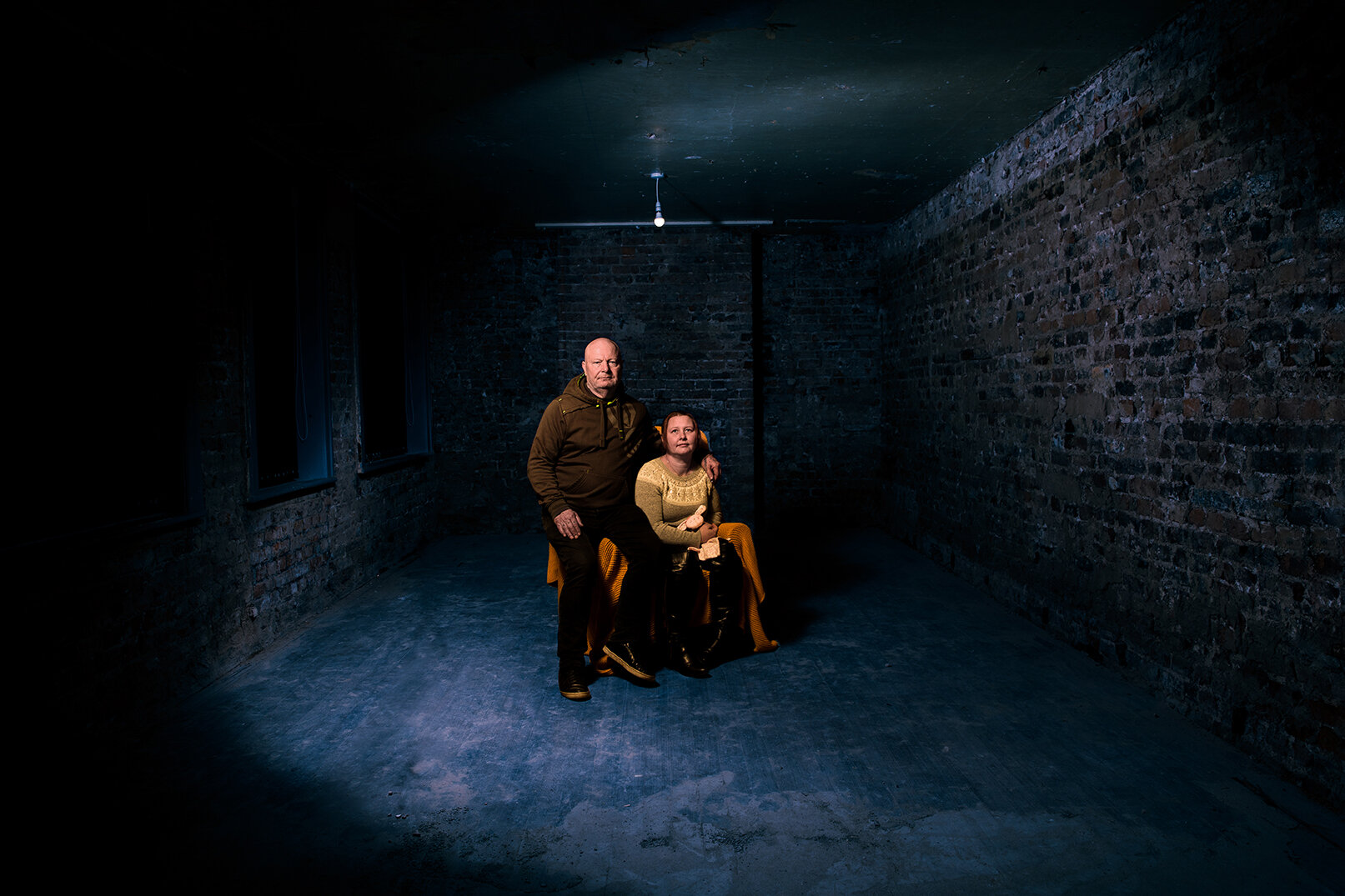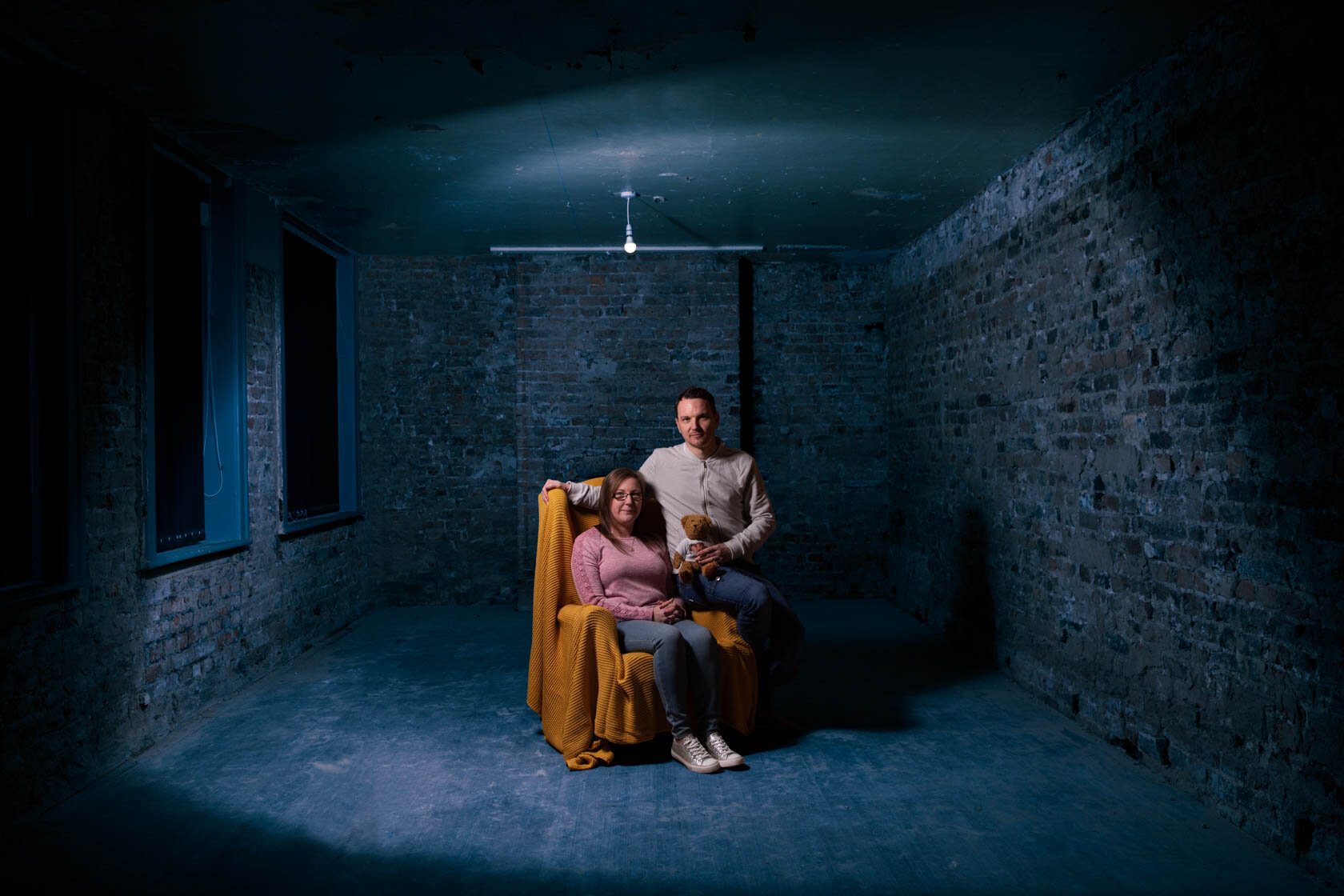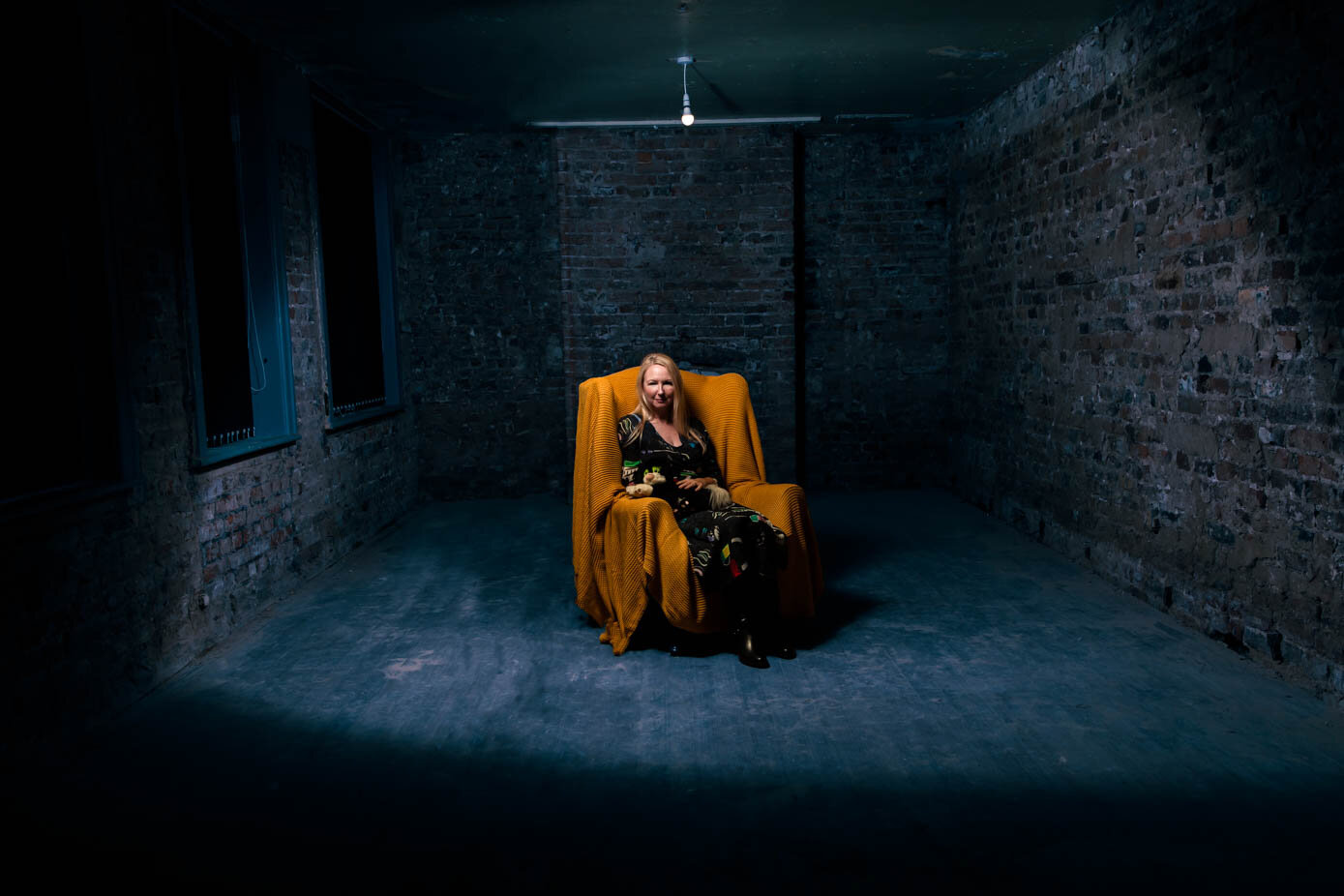Arlo
“We had him, we cuddled him, we loved him, we spent all of those days with him but why is that all we’re allowed? Why is he no longer here? W
hy is there not enough knowledge around this terrible disease?”
In our conversations with families affected by rare disease, all too many have lost loved ones. In fact 30% of children diagnosed with a rare disease die before their 5th birthday. Their families feel isolated and often their loved ones simply do not know what to do or say to support them. Sometimes all they need is to simply know someone is there for them and that they can talk about their loved one as and when they need to.
This project was designed to start the conversation about child bereavement due to rare disease and highlight the need for more support for families. We recently met Claire Li who explained about her son Arlo.
“Arlo was a very wanted little boy. His first scan picture was perfect, there were no indications that there was anything wrong. We’d had a previous baby with Edwards’ Syndrome who died at 18 weeks, which was picked up at the scan with a cystic hygroma, so we just assumed that there wasn’t going to be any issues at all. They told us it wouldn’t happen again.
We had blood tests which screened negative but because of our history they wanted to be cautious. We decided not to do further tests but at the 20-week scan the consultant picked up anomalies. He said he had a hole in his heart, short femurs, a cyst on his brain, and clenched fists. I remember in that moment hating the consultant. I just sat there looking at him thinking no, you’re wrong, you’re wrong, this is all wrong, and so I agreed to an amniocentesis and then went home and did what we all do in that situation and turned to Google.
You look up all these symptoms and signs in the scan, and individually they could have been described in any baby that was born healthily but because there was 5 together there was high risk. It was terrifying. The results came back and confirmed that our baby had Edwards’ Syndrome. We were at 20 weeks and had to make the decision whether to continue with the pregnancy or end it. He was wriggling and moving and I just couldn’t, I couldn’t abort him, I had already bonded with him and so we continued with the pregnancy.
After the diagnosis I didn’t really think about it. It taught me to live each day. Arlo’s big brother, Noah, loved to kiss my tummy and enjoyed feeling him move. He was very active. We felt blessed each night when we went to bed and he was still wriggling and then in the morning when he still kicked. We had a few scares at home where I didn’t feel him so I’d drink a glass of coke, ice-cold, out of the fridge and then we would wait, lying on my side playing loud music and we’d wake him up.”
“The hospital were really supportive and if we were concerned we were told we could go straight in to check on him. In fact, despite hating the consultant, for giving us the diagnosis, we formed such a strong relationship with him that when Arlo was born, we gave him his name as his middle name. As a consultant he was so open and honest and that was really important to us. He didn’t try to sugar-coat anything.
It was extremely important to me that we had a certificate to acknowledge that Arlo existed. We did not have that for his sister, Hope, and that hurt more than anything. I remember speaking with the consultant and explaining how important it was that we had a live birth so that we had that certificate and I wanted to give Noah and Andy the chance to hold him. Sadly, it is not always the case that consultants are willing to do everything in their power to ensure a live birth, when they know that the baby is possibly not compatible with life. Our consultant was very supportive and recognised how important it was for us.
Arlo lived for 20 days, 20 amazing days. Initially we were warned he may be stillborn, then we were told that he may only make it for maybe an hour but he was a little fighter and he made it past the first hour, the first day and then the first week. He just fought and he gave us that time, and Andy and Noah were able to bond with him.
I didn’t think I would love Arlo like I love Noah, especially having known that he may not live long. Noah’s my whole world. My mum used to say that when you have a child, the love is just born with them. I knew I’d love Arlo, I loved him already but not like I loved Noah, but the minute he was born and they put him on my chest, that love was there.
In the early days we chose comfort care for Arlo so there was minimal intervention. We were transferred to the Hospice where we had 20 days with him. It was 20 days of memory making where he wasn’t attached to machines. During that time I had the opportunity to breastfeed and it was lovely. We had him with us at all times and he was never alone. The Hospice were wonderful and we were able to spend this precious time as a family so that all Arlo knew was love.”
“Arlo lived for 20 days, 20 amazing days. Initially we were warned he may be stillborn, then we were told that he may only make it for maybe an hour but he was a little fighter and he made it past the first hour, the first day and then the first week.”
“We chose comfort care rather than intervention right up until a couple of days before he died. There are no regrets in what we chose but you always have the ‘what ifs’. Did I try hard enough, did we fight enough for him, there’s the guilt of that. A lifetime would never be enough time with him but you’d live a lifetime with this pain, a thousand lifetimes to pay for those 20 days. The wishing for it to be longer, the wishing for there to be more out there for them, that will never go away.
During the 20 days we had with Arlo it was quite scary sometimes, especially when he had an apnoea episode. He loved to have skin to skin cuddles and kisses. When he would hear Andy’s voice you could see his eyes follow him or search for him. Noah was constantly coming in and kissing and cuddling him. Arlo had his own little personality. When he was angry he’d go purple and we’d call him Mr Angry Head. He would quite often just lie there and look at you, he had eyes that looked like an old man’s eyes that had been here for a long time, they were quite intense his eyes.
We took him home twice. The first time we came home with one of the hospice staff and a second time we came home by ourselves. The goal was to come home to be a family of four but sadly we never got that opportunity. I think I’d started grieving from the day he was born because we knew the outcome. Feeling that overwhelming love and yet knowing our time together was limited was hard. There was one day when he was poorly with Colic and we didn’t think he was going to make it. I think we’d been awake at that point for something like 36 hours. That’s when the anger started. It was all just so unfair. I was really angry and still am, because it’s hard to understand that in this day and age there’s not more that can be done. There were times in the Hospice when I just felt there wasn’t a lot of hope and I needed it, I needed something to cling to.
When we were initially given Arlo’s diagnosis, I kept a little blog and did an open letter rather than people asking me all the time “how are you, how’s the pregnancy”. I just shared that on social media and let word spread that way. Getting the diagnosis was horrendous for a couple of weeks and then it was time to get up and enjoy what we had. We had a summer, an amazing summer, when we made memories as a family being pregnant and made a scrapbook with Noah.
People were supportive. They want to help but they don’t know what to do or what to say. I don’t think there’s anything that anyone could do or say. It’s just nice knowing people were there before and after he died.”
As part of this project we created sculptures of each child using photographs and 3D scanning technology
“Noah chose Arlo’s name. We wanted him to be part of the pregnancy and we didn’t know whether he’d actually make it to be born so we needed this little person already in my tummy to be a person, to have a life, and Noah to be part of that, so we had a shortlist. Arlo was certainly not my choice of his name but I absolutely love it now.
Noah is 5 and he definitely misses having a baby brother. He will make random comments like he’ll save a bit of cookie for Arlo or he’ll ask if Arlo can hear him, all the way up there. He’ll be doing things like any other child, like playing with his transformers or his lego and then out of the blue he’ll ask another question.
At home we have Arlo’s ashes and I carry them downstairs of a morning and place them by his photo and he comes up and sleeps next to my bed of a night. If I’ve gone upstairs and haven’t take Arlo with me, Noah will shout “Mummy, you’ve forgotten Arlo’s dust”, so I have to go back and get his dust.
I don’t think anyone could understand what I’m going through. I think grief is a very personal journey. I feel very, very alone in it and I think that’s how grief is. Even with Andy and knowing he’s grieving, I still feel alone in my grief and I’m sure he feels alone in his. I don’t think anyone could truly, truly understand.
I truly believe that if I didn’t have Noah, I wouldn’t be sitting here. I wouldn’t ever get up again, I know I wouldn’t. Having Noah has given me that focus and that motivation to get up and get through it. There’s no other choice for me now, there’s no other way out. People say you’re brave or you’re an inspiration but you’re not, there’s no choice, there’s no other option and I think anyone would be the same. Child bereavement is such a hell, it’s worse than hell. It doesn’t matter whether you’ve had that baby for an hour, whether that baby’s stillborn, it doesn’t matter because not only with that baby, have you lost your baby, you’ve lost your future, you’ve lost everything you’ve planned in your head. You’ve lost the picture of how it will be, so you’re grieving for a future that you’re never going to have as well as grieving that child. I think a lot more needs to be done because it’s so much more common than I even knew. There’s that old cliché, it’s like being part of a club you don’t want to be a part of and it’s very much like that. No one asked to join, no one wants to be here but it’s a lot more common than I even imagined.
I think the anger at the moment is still driving us. We had him, we cuddled him, we loved him, we spent all of those days with him but why is that all we’re allowed. Why is he no longer here, why is there not enough knowledge around this terrible disease? I would like to think that his legacy is to show the importance of being able to spend every minute, every second together after they are born, even if they have a diagnosis that says they are life-limited. There are lovely moments to be had, these children are still loveable, they’re still children, they’re still babies, they’re still so very much loved.
It is so important to raise awareness and to give people knowledge that this is a big life changing event that happens, not just for the child with the diagnosis, but for the families, the siblings. There’s got to be more done, there’s got to be more knowledge out there and more understanding as well.”
Hear the other Stories
What is Edwards’ Syndrome?
Edwards' syndrome, also known as Trisomy 18, is a rare but serious genetic condition that causes a wide range of severe medical problems. Sadly, most babies with Edwards' syndrome will die before or shortly after being born.
Some babies with less severe types of Edwards' syndrome, such as mosaic or partial trisomy 18, do survive beyond a year and, very rarely, into early adulthood. But they are likely to have severe physical and mental disabilities.
Cause of Edwards' syndrome
Each cell in your body normally contains 23 pairs of chromosomes, which carry the genes you inherit from your parents. But a baby with Edwards' syndrome has three copies of chromosome number 18, instead of two.
The presence of this extra chromosome in cells severely disrupts normal development.
Edwards' syndrome is rarely inherited and is not caused by anything the parents have done. The development of three copies of chromosome 18 usually happens at random during the formation of either the egg or sperm.
As this happens randomly, it's extremely unlikely for parents to have more than one pregnancy affected by Edwards' syndrome. However, the chance of having a baby with Edwards' syndrome does increase as the mother gets older. (Source: NHS)
If you would like more information about Trisomy 13 or 18 you can contact SOFT UK online at www.soft.org.uk
If you wish to discuss this project or reproduce any images or story, please contact ceri@samebutdifferentcic.org.uk. The photographer on this project is Ceridwen Hughes (www.ceridwenhughes.com) except for the images of the baby which were kindly supplied by the parents.
